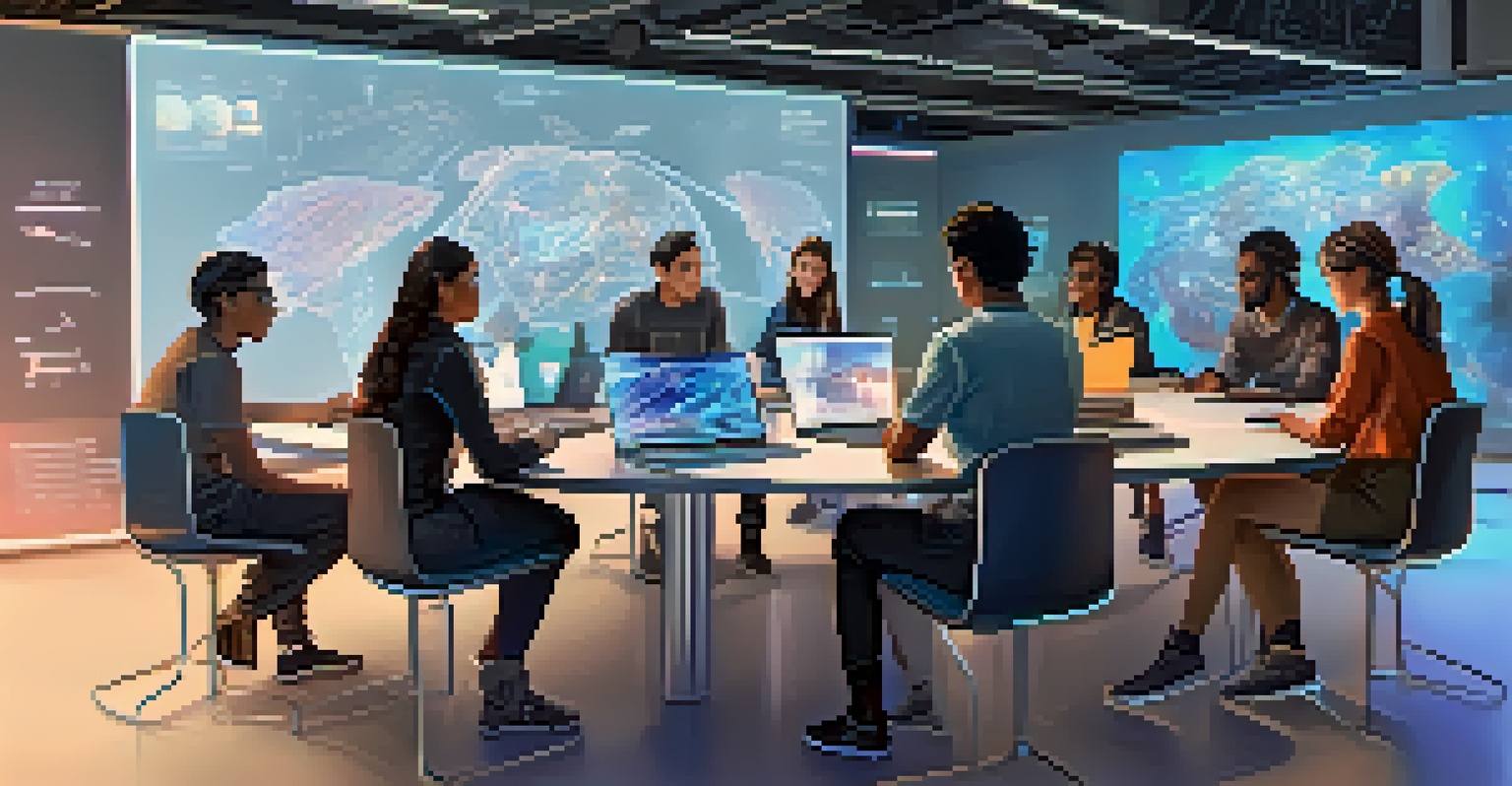The Evolution of Assessment Methods Through Digital Technology

Understanding Traditional Assessment Methods
Before diving into the digital revolution, it's crucial to understand traditional assessment methods. These often included standardized tests, essays, and oral examinations, focusing heavily on rote memorization. While effective in certain contexts, they often didn't cater to diverse learning styles, leaving some students at a disadvantage. This rigidity highlighted the need for more inclusive and flexible assessment approaches.
Assessment is not about perfect scores, but about understanding and improving.
Moreover, traditional assessments typically operated on a one-size-fits-all basis. Students would sit for exams in a controlled environment, often resulting in stress and anxiety. This pressure could skew results, making it challenging to gauge a student's true understanding or potential. As educators began to recognize these pitfalls, the search for more effective methods gained momentum.
Thus, the stage was set for a shift towards innovative assessment strategies. The limitations of traditional methods sparked a dialogue about how technology could enhance learning outcomes. This conversation paved the way for the integration of digital technology into educational assessments.
The Rise of Digital Technology in Education
Digital technology has revolutionized education in countless ways. From online learning platforms to educational apps, technology has made information more accessible than ever. This shift allowed educators to explore new assessment methods that could adapt to the unique needs of each student. The integration of technology into the classroom has opened doors to innovative practices that were once unimaginable.

For instance, online quizzes and interactive assessments enable immediate feedback, which is a game-changer for student engagement. These tools help learners identify their strengths and weaknesses in real-time, fostering a growth mindset. As a result, assessments became more formative, focusing on the learning process rather than just the end result.
Shift to Formative Assessments
The move from summative to formative assessments focuses on continuous feedback and supports student growth throughout the learning process.
The digital landscape also allows for the creation of adaptive assessments, which adjust the difficulty based on a student's responses. This personalized approach not only boosts confidence but also enhances learning experiences. As technology continues to evolve, so too do the possibilities for innovative assessment methods.
Shifting from Summative to Formative Assessments
Historically, assessments often focused on summative measures, evaluating what students had learned at the end of a course. However, the digital age has ushered in a shift towards formative assessments, which are ongoing and reflective of a student's learning journey. This change emphasizes the importance of feedback and encourages continuous improvement, rather than a one-time evaluation.
The mind is not a vessel to be filled, but a fire to be kindled.
Digital tools facilitate this shift by allowing educators to collect data on student performance and engagement throughout the learning process. For example, platforms like Google Classroom and Edmodo provide built-in assessment features that help teachers track progress over time. This real-time assessment data can inform instructional strategies, ensuring that teaching methods align with student needs.
Moreover, formative assessments help cultivate a supportive learning environment. Students are more likely to engage with material when they understand that the focus is on growth rather than grades. This mindset encourages exploration and risk-taking, essential components of effective learning.
Integrating Gamification into Assessments
Gamification has emerged as a powerful tool in modern education, transforming assessments into engaging experiences. By incorporating game-like elements, educators can motivate students to participate more actively in their learning. This approach not only makes assessments enjoyable but also encourages critical thinking and problem-solving skills.
For instance, platforms like Kahoot! and Quizizz allow teachers to create interactive quizzes that feel more like games than tests. Students can compete against each other in a fun and dynamic environment, which can alleviate test anxiety. This playful atmosphere often leads to enhanced retention of information and a deeper understanding of the material.
Gamification Enhances Engagement
Incorporating game-like elements in assessments motivates students and promotes critical thinking, making learning more enjoyable.
Furthermore, gamified assessments can provide instant feedback, helping students identify areas for improvement. By merging learning with play, educators can create a more holistic and effective assessment experience. As a result, students are more likely to embrace challenges and view assessments as opportunities for growth.
The Role of Artificial Intelligence in Assessment
Artificial Intelligence (AI) is rapidly changing the landscape of educational assessment. With its ability to analyze vast amounts of data, AI can provide insights into student performance that were previously unattainable. This technology enables personalized learning experiences, tailoring assessments to meet individual needs and preferences.
For example, AI-powered platforms can assess students' responses and adapt questions in real-time, ensuring that they are appropriately challenged. This level of customization helps keep students engaged and promotes deeper learning. Additionally, AI can assist teachers in grading, saving valuable time and allowing for more focus on instruction.
However, it's essential to approach AI in education thoughtfully. While it offers exciting possibilities, concerns about data privacy and bias must be addressed. As we embrace AI-driven assessments, it's crucial to maintain a balance between innovation and ethical considerations, ensuring that technology serves to enhance, rather than replace, the human element in education.
Enhancing Accessibility Through Digital Assessments
One of the most significant benefits of digital assessments is their potential to enhance accessibility for all students. Traditional methods often posed barriers for learners with disabilities or varying needs. However, digital tools can offer customized options, such as screen readers, adjustable text sizes, and alternative question formats, making assessments more inclusive.
For instance, platforms like Quizlet and Nearpod allow educators to create assessments that cater to diverse learning styles. With features like audio support and visual aids, students can engage with content in ways that suit them best. This flexibility not only promotes equity but also empowers students to demonstrate their knowledge effectively.
AI Personalizes Learning Experiences
Artificial Intelligence tailors assessments to individual student needs, enhancing engagement and providing deeper insights into performance.
Moreover, digital assessments can be taken in various environments, allowing students to choose settings where they feel most comfortable. This adaptability can significantly reduce anxiety and improve performance, ultimately leading to more accurate evaluations of student understanding. By prioritizing accessibility, we can ensure that every learner has the opportunity to succeed.
The Future of Assessment: Blending Traditional and Digital Methods
As we look ahead, the future of assessment is likely to involve a blend of traditional and digital methods. While technology offers innovative solutions, the value of face-to-face interaction and hands-on experiences remains irreplaceable. A hybrid approach can create a more comprehensive understanding of student learning, combining the best of both worlds.
For example, educators might use digital tools for formative assessments while reserving traditional methods for summative evaluations. This strategy allows for ongoing feedback while still maintaining rigorous standards for final assessments. By integrating both approaches, teachers can create a more balanced and effective assessment landscape.

Ultimately, the goal is to create assessments that truly reflect a student's knowledge and skills. As technology continues to advance, educators must remain adaptable and open to new ideas. By embracing innovation while honoring traditional practices, we can foster a more holistic and meaningful assessment experience for all learners.